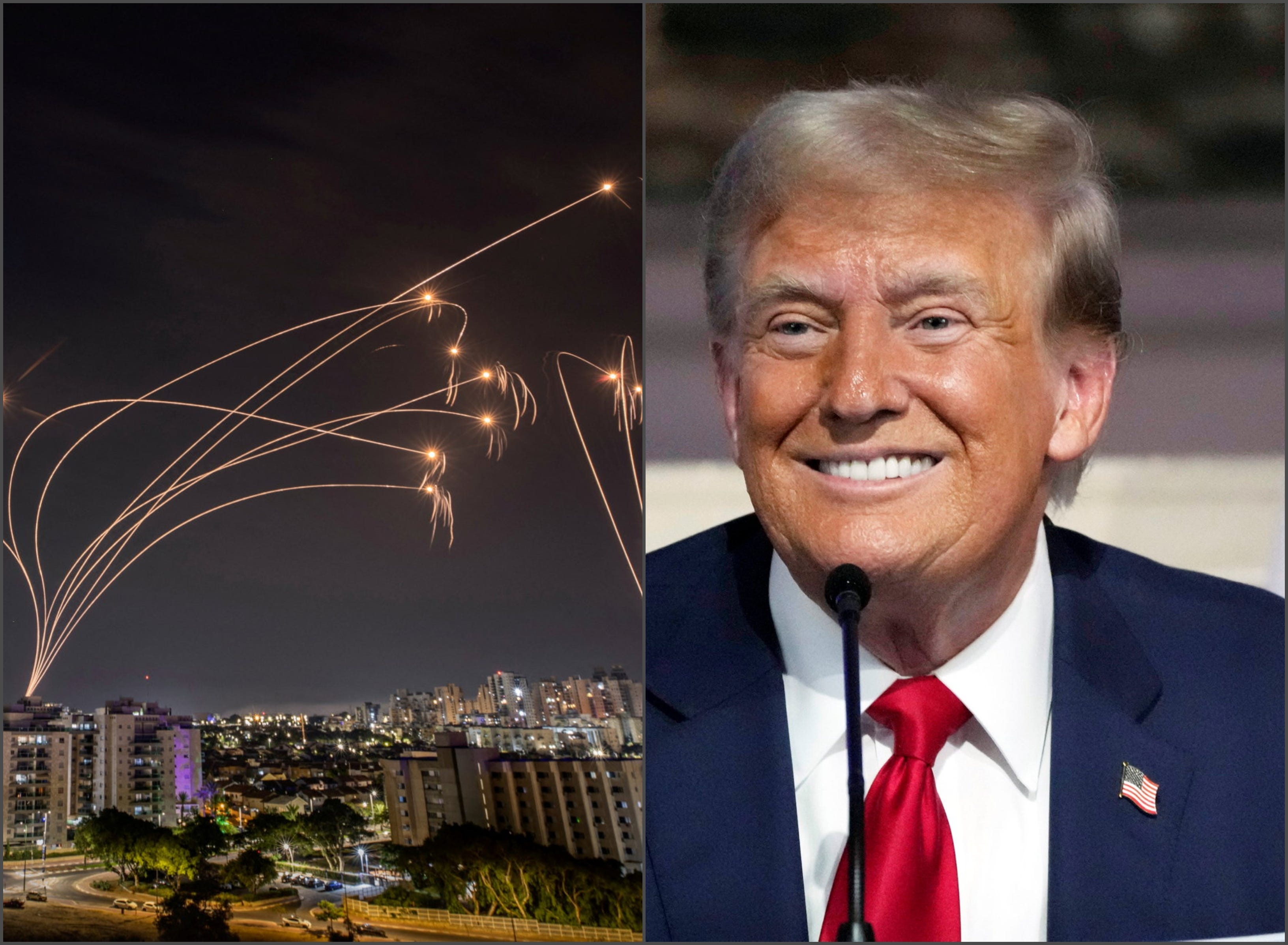Understanding Trump's Proposed Golden Dome Missile Defense System

Table of Contents
During his presidency, Donald Trump frequently touted ambitious plans for a revolutionary missile defense system, often referred to informally as the "Golden Dome." This aspirational project promised a near-perfect shield against ballistic missile attacks, a concept that captivated supporters and sparked intense debate among experts and policymakers alike. This article will delve into the specifics of this proposed system, examining its purported capabilities, technological feasibility, and potential implications for national security. We will explore the controversies surrounding the project and assess its place within the broader context of US ballistic missile defense strategies.
The Concept of the "Golden Dome" Missile Defense System
The core idea behind the "Golden Dome" was a space-based, layered missile defense system unlike anything previously conceived. It envisioned a multi-layered approach, combining various advanced technologies to provide comprehensive protection against a wide range of ballistic missile threats. This contrasted sharply with existing ground-based systems like the Ground-Based Midcourse Defense (GMD) system. The system's ambition lay in its potential for near-100% interception rates, a significant leap from current capabilities.
- Space-based sensors for early detection and tracking: These would provide unprecedented early warning capabilities, allowing for timely interception of incoming missiles, even those launched from distant locations. The sensors would need to be capable of detecting and tracking not only traditional ballistic missiles but also newer, more challenging hypersonic weapons.
- A network of interceptors in space and potentially in the atmosphere: This network would engage threats at various stages of their flight, maximizing the chances of successful interception. The space-based interceptors would likely be considerably faster and more maneuverable than current systems, enabling them to engage a wider range of targets, including those employing advanced countermeasures.
- Potential integration of directed energy weapons (DEWs): The use of DEWs, such as lasers or high-powered microwaves, was considered to potentially enhance the system's effectiveness by destroying incoming missiles with pinpoint accuracy and without the need for kinetic interceptors.
- Emphasis on rapid response times and near-100% interception rates: The overarching goal was to create a system capable of neutralizing virtually any ballistic missile attack, regardless of its size or sophistication.
Technological Feasibility and Challenges of the Golden Dome
While the "Golden Dome" concept was ambitious, its technological feasibility presented significant hurdles. Developing and deploying such a system would require breakthroughs in several key areas and would be associated with substantial financial investment and logistical complexities.
- Development of advanced space-based sensors capable of detecting hypersonic weapons: Hypersonic weapons present unique challenges due to their speed and maneuverability, requiring sensors with exceptional accuracy and responsiveness.
- The challenges of deploying and maintaining a large-scale space-based interceptor network: Launching, deploying, and maintaining a vast network of satellites and interceptors in space is a complex and expensive undertaking, requiring significant advancements in space-based infrastructure and logistics.
- Vulnerability to countermeasures and potential attacks on space-based assets: A space-based system would be vulnerable to attacks by adversaries seeking to disable or destroy its components. Developing countermeasures to mitigate these risks would be critical to the system's effectiveness.
- The immense financial resources required for research, development, and deployment: The cost of such a project would likely run into hundreds of billions, if not trillions, of dollars, representing a significant strain on national resources.
Strategic Implications and International Reactions to the Golden Dome
The "Golden Dome" concept had far-reaching strategic implications, both domestically and internationally. Its deployment would likely have profound effects on global security dynamics and potentially trigger a new arms race.
- Potential escalation of the arms race with adversaries developing countermeasures: Other nations, particularly those with ballistic missile capabilities, would likely respond to the "Golden Dome" by developing countermeasures to neutralize its effectiveness. This could lead to an escalation of the global arms race and undermine strategic stability.
- Reactions from international organizations and other countries concerned about the system's implications: International organizations and other nations might express serious concerns about the system’s potential to destabilize the global strategic balance and raise concerns about the weaponization of space.
- The possibility of the system triggering a new era of space weaponization: The deployment of the "Golden Dome" could spark a renewed interest in the weaponization of space, potentially leading to a dangerous arms race in the space domain.
- Debate on whether the system would enhance or undermine global security: The question of whether such a system would ultimately improve or worsen global security remains hotly debated, with arguments made on both sides.
Comparison with Existing Missile Defense Systems
The proposed "Golden Dome" differed significantly from existing US missile defense systems, most notably the Ground-Based Midcourse Defense (GMD) system.
- Cost-effectiveness: The "Golden Dome" was projected to be significantly more expensive than existing ground-based systems, raising questions about its cost-effectiveness.
- Overlap and redundancy: There might be some overlap or redundancy between the proposed system and existing capabilities, potentially reducing its overall value.
- Strategic benefits of a space-based system versus ground-based systems: While a space-based system offers potential advantages in terms of early warning and interception capabilities, ground-based systems offer more resilience against attacks.
Conclusion
The proposed "Golden Dome" missile defense system represented a bold, albeit controversial, vision for national security. Its promise of near-perfect defense against ballistic missile attacks was compelling, but its technological feasibility, astronomical costs, and potential impact on global security remain significant challenges. The system’s potential to trigger an arms race and its vulnerability to countermeasures are serious concerns that must be carefully considered.
Understanding the complexities of the "Golden Dome" missile defense system is crucial for informed discussion about national security. Further research and open debate are essential to assess the viability and implications of such ambitious plans for a comprehensive missile defense system. Continue your research into the realities of Trump's proposed Golden Dome and other related concepts to better grasp the intricacies of modern missile defense strategies.

Featured Posts
-
 Gospodin Savrseni Vanja I Sime Nevjerojatna Kemija Na Fotografijama
May 22, 2025
Gospodin Savrseni Vanja I Sime Nevjerojatna Kemija Na Fotografijama
May 22, 2025 -
 From Draft Day To Team Success Jesse James Journey
May 22, 2025
From Draft Day To Team Success Jesse James Journey
May 22, 2025 -
 Dexter Revival The Return Of Popular Antagonists
May 22, 2025
Dexter Revival The Return Of Popular Antagonists
May 22, 2025 -
 Live Tv Chaos Bbc Breakfast Guest Interrupts Broadcast
May 22, 2025
Live Tv Chaos Bbc Breakfast Guest Interrupts Broadcast
May 22, 2025 -
 Steelers Fans Face Potential Ireland Matchup Disappointment
May 22, 2025
Steelers Fans Face Potential Ireland Matchup Disappointment
May 22, 2025
Latest Posts
-
 El Virus Fifa Y La Real Sociedad Un Calendario Implacable Sin Tregua
May 22, 2025
El Virus Fifa Y La Real Sociedad Un Calendario Implacable Sin Tregua
May 22, 2025 -
 Finaleto Na Ln Shpani A Slavi Protiv Khrvatska Po Penali
May 22, 2025
Finaleto Na Ln Shpani A Slavi Protiv Khrvatska Po Penali
May 22, 2025 -
 La Real Sociedad Atrapada En El Virus Fifa Sin Descanso Tras La Avalancha De Partidos
May 22, 2025
La Real Sociedad Atrapada En El Virus Fifa Sin Descanso Tras La Avalancha De Partidos
May 22, 2025 -
 Shpani A Shampion Na Ln Bolna Pobeda Protiv Khrvatska
May 22, 2025
Shpani A Shampion Na Ln Bolna Pobeda Protiv Khrvatska
May 22, 2025 -
 Shpani A Go Osvoi Tronot Vo Ln Khrvatska Porazena Po Penali
May 22, 2025
Shpani A Go Osvoi Tronot Vo Ln Khrvatska Porazena Po Penali
May 22, 2025
